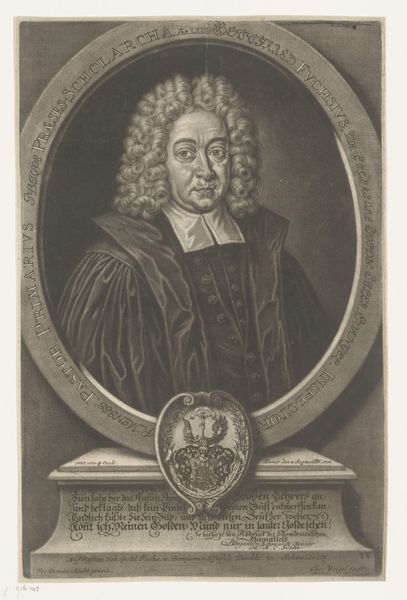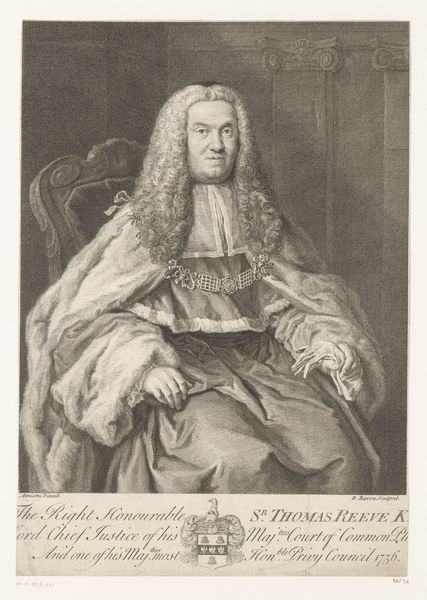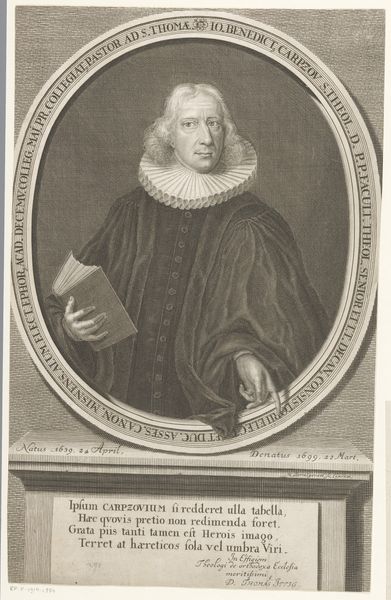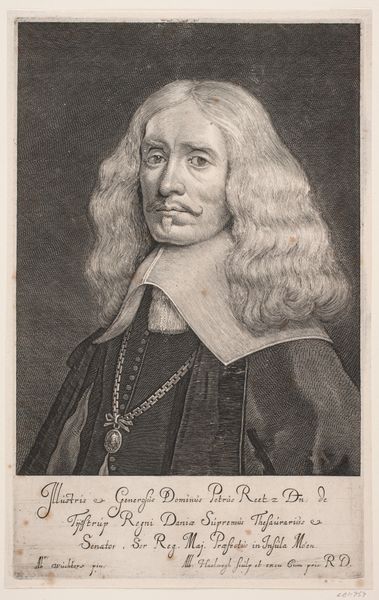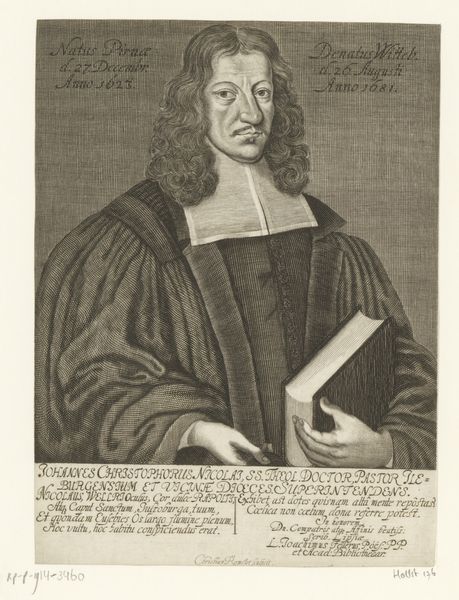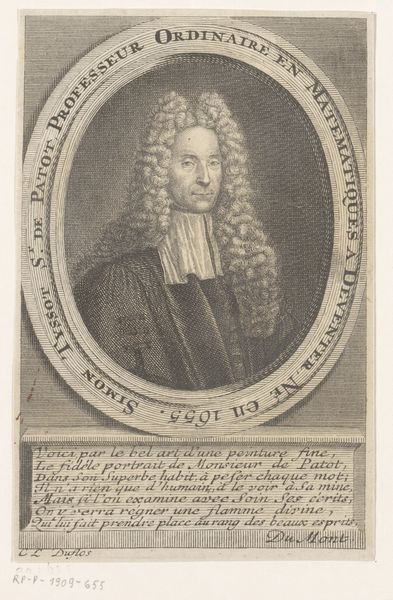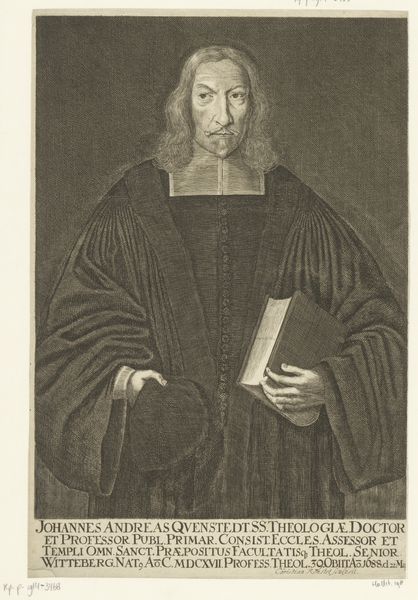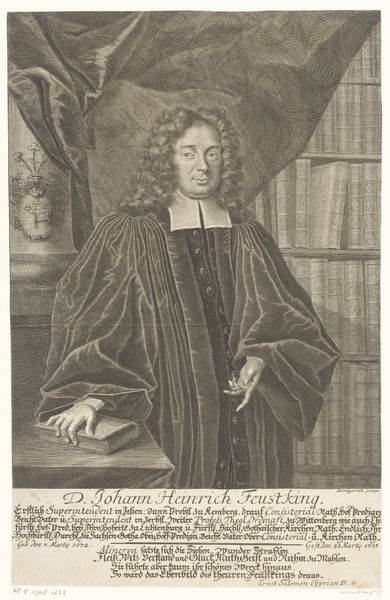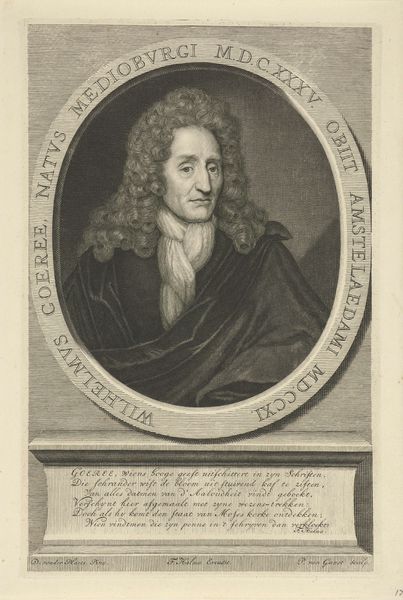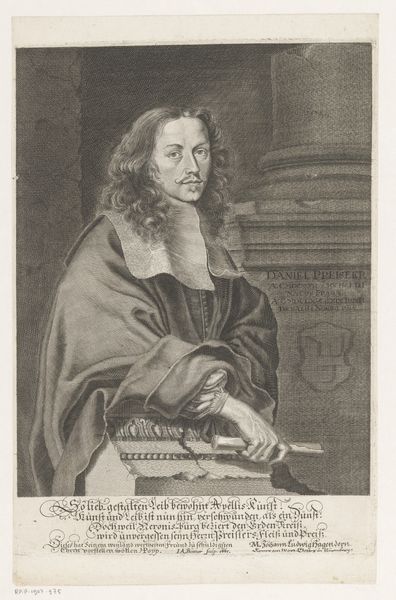
engraving
#
portrait
#
baroque
#
old engraving style
#
historical photography
#
portrait reference
#
19th century
#
history-painting
#
engraving
Dimensions: height 293 mm, width 183 mm
Copyright: Rijks Museum: Open Domain
Editor: Here we have Martin Bernigeroth's engraving, "Portret van Johann Fabricius," dating from 1698 to 1733. It's quite striking how the detail in the face contrasts with the more broadly rendered robes. What captures your attention in this piece? Curator: What interests me most is the function of such portraits in their historical moment. This image, permanently preserved, served to reinforce social hierarchies and ideals within the context of 17th and 18th-century European society. Consider how this portrait, through its distribution, shaped the public perception of Johann Fabricius. What symbols were intentionally displayed, and what were subtly omitted? Editor: That's fascinating! I hadn't thought about the intent behind its creation so much. I was focused on the individual depicted. Does the style, perhaps Baroque, affect how it’s received politically? Curator: Absolutely. The Baroque, with its emphasis on grandeur and emotional intensity, was often employed by the powerful—both secular and religious—to project authority. In this case, the meticulous engraving, the book, all reinforce his position. How might this compare to contemporary forms of portraiture used by public figures? Editor: I guess it's not too different from official photos released by politicians today – carefully constructed to project an image of competence and authority. Curator: Exactly! The more things change, the more they stay the same. This portrait is a reminder that art has always been entangled with power and the construction of public image. It encourages us to consider how such images influence our understanding of historical figures. Editor: I’ll never look at a historical portrait the same way again. Thanks for opening my eyes to that!
Comments
No comments
Be the first to comment and join the conversation on the ultimate creative platform.

